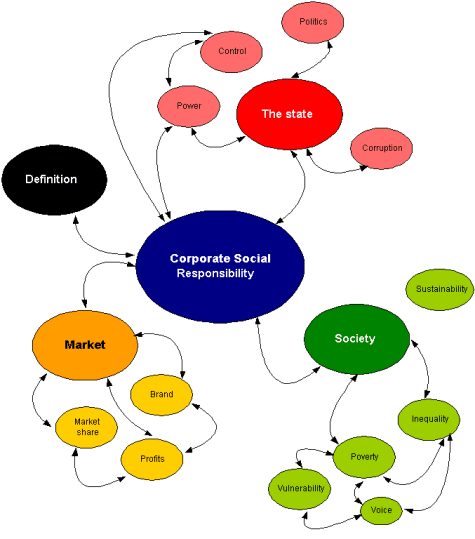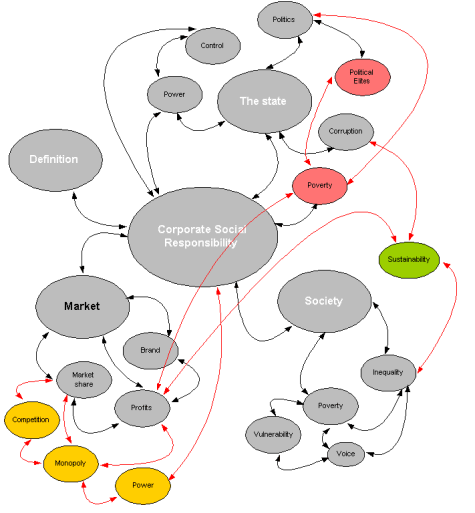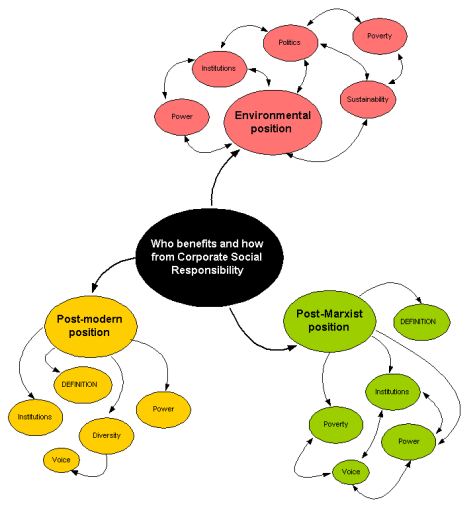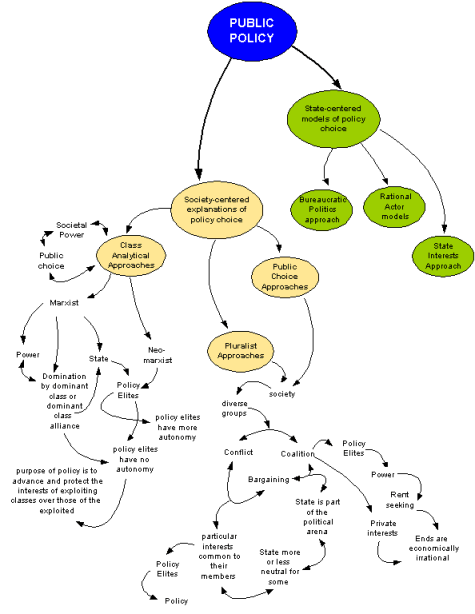|

You
have chosen to view the literature review component. Whether or not
this is your starting point, it would be beneficial to note the backward
and forward linkages with other components. |
Backward
links |
|

|
The literature review
is closely linked to the literature search in so far as it sets out
the key debates concerning your research issue. |
|

|
The literature review
must relate to your research issue and not be simply a historical
overview of existing arguments on the subject. |
|
Forward
links |
|

|
The principle aim of
the literature review is to locate your research question. This
should be borne in mind at all times. |
|
To
proceed, either scroll down this page or choose any sub-component from the
detailed map (bottom-left frame). |

|
A literature review
that is structured along conceptual lines makes it easier to criticise
conceptual frameworks that you reject as well as justify the one that
you wish to adopt. |
LITERATURE
REVIEW
A
significant proportion of a dissertation (normally chapter 2) is
comprised of what is commonly known as a literature review. There are
three key stages in conducting a literature review
-
collecting
existing knowledge on the research subject, reading and note-taking;
-
organising
the knowledge in such a way that a distinctive theme emerges - creating a
structure for the writing of the review; and
-
writing
the review in order to locate your research question.
A
literature review must not be confused with background information
which is often included in the introductory chapter of any dissertation. Background
information only serves to describe the larger context within which the research
is located and its broad relevance. Neither must a literature review
be confused with the secondary information that is often
used in the analysis chapter to support or validate your argument.
A literature review is therefore distinct in that it reviews
key published writing on a particular subject with the view to establishing
where the dissertation is likely to add-value.
The
phrase "literature review" is used in relation to a number of iterative
activities
The iterative nature of these activities
makes it difficult to isolate the reading from the writing phase. However,
it is possible to elaborate what each of these activities entail. The
first was covered in week 4 and is summarised below. The other two, are
the subject of this week (week 5).
READING and
NOTE-TAKING
|
Reading
and note-taking were the subject of the lecture in week 4 when
the literature search was discussed. The key points to note are
|
|
|

|
|
Speed read
in order to gain a wide understanding of your topic area or issue. |
|
|

|
|
As you read, ask yourself 3 key questions:
(1) What do I already know (2) what am I looking for in the source (3)
what is new or interesting in the source
|
|
|

|
|
Avoid detailed note-taking as far as
possible. Remember, at this stage, detailed note taking without
knowing how you are going to use the information could result in a lot of
wasted time, not to mention paper.
|
|
|

|
|
If you are finding
it difficult to avoid detailed note-taking, extract from your detailed
notes, the main issues, arguments and conclusions
with the help of the summary note taking form. |
According to Dunleavy (1988: 112),
|
Literature
reviews are based on a systemic reading of existing
academic writing on a particular topic .... (emphasis added). |
|
Source
|
Dunleavy, P (1988), Studying for a
degree in the humanities and social sciences, Basingstoke:
Macmillan.
|
There are 3 key phrases in this quotation
that are critical.
|
|

|
|
Systemic reading meaning
to search and read in a systematic manner. The
use of a range of search facilities (libraries, social science citation
indexes etc) are of relevance here. |
|
|

|
|
Existing writing taken
to mean published work. Be aware of the quality control
issues that pertain to some internet sources. |
|
|

|
|
Particular topic
taken to mean the topic that you would like to explore in your
dissertation. |
|
 
|
 Aim
of a literature review Aim
of a literature review
|
Dunleavy (1988: 112) goes on to argue that the
aim of a literature review
|
... is to survey
and report on a reasonably large or complex
field of work, in the process developing some themes
to make the review distinctive (emphasis added). |
|
Source
|
Dunleavy, P (1988), Studying for a
degree in the humanities and social sciences, Basingstoke:
Macmillan.
|
Once again, there are 3 key aspects in this
quotation that are critical.
|
|

|
|
Survey and report
on a reasonably large or complex field.
The question that is often asked is how large should this field of
work. As this will depend o the particular dissertation topic, no
single size can be stipulated. It is important to note that quality
matters and not quantity. It is important that key literature
sources are consulted and reported on. |
|
|

|
|
Developing some
themes. This involves the identification of main themes in the
summary note-taking form and clustering them into groups by issue and
within it by groups that hold particular points of view. |
|
|

|
|
Make the review
distinctive. This is best illustrated by an example. If
two people are given the same 10 pieces of literature, their reviews will
be distinctive (not the same) because they would have reviewed the
literature in relation to a specific research concern - in other words, in
relation to their research question. |
A literature review should not be
confused with an annotated bibliography. The latter is a summary
of works in a given subject arranged alphabetically
by surname of first author. In other words, an annotated
bibliography is an expanded bibliography that reviews each
work on its own.
Here is an example from the World Bank on Social
Capital
|
Box 1 |
|
Barro,
Robert (1989) "A Cross-Country Study of Growth, Saving and
Government". National Bureau of Economic Research Working Paper
2855. Cambridge, Mass.
In
this working paper, Robert Barro addresses government policies and
their effects on a country's economic performance. The study he
undertakes is an empirical investigation of the growth experiences
of a number of countries in the post-World War II period. It
assesses the effects of various kinds of public services and
taxation on long-term rates of growth and saving. Barro derives the
framework of his study from recent theories of endogenous economic
growth.
The
paper is divided into four parts. In part I, Barro introduces a
model where public services and taxation affect an economy's
long-term growth and saving. He considers the effects of public
services on private production and household utility, the influences
of governmental activities on property rights, and the effects of
taxation on private incentives to save and invest. The model,
however, neglects population growth, does not distinguish between
physical and human capital, and concentrates on steady-state
results.
Since
population growth appeared to interact closely with the level and
growth rate of income as well as with investment in human capital,
Barro incorporated these elements into the model using results from
existing literature. Measures for these new variables described in
part II include time spent raising children, human capital per
person, and time spent producing goods. In part III, Barro
introduces some transitional dynamics into the model, such as the
treatment of human capital as the sum of raw labor and accumulated
human capital, and the cost of raising children as including goods
as well as time. He finds that increases in per capita income go
along with decreases in population growth and increases in the
amount invested in each person's human capital.
In
part IV, Barro discusses the results of his empirical work. Using
data across 72 countries from 1960 to 1985, he analyses the
determination of the growth rate of real per capita GDP, the ratio
of physical investment expenditure to GDP, the amount of investment
in human capital determined by secondary school enrolment rates,
and the rate of population growth. Barro's strategy is to consider
cross-country differences in the context of changes in the level of
income as an economy moves from a low level toward steady-state per
capita growth. The results show that some aspects of government
services affect growth and investment as predicted by the
theoretical models. Specifically, public consumption spending is
systematically inversely related to growth and investment, and
public investment tends to be positively correlated with growth and
private investment. There was a strong negative interaction between
population growth and investment in human capital which indicates
the trade-off between the quantity and quality of children. Although
Barro considers these findings to be preliminary, he concludes with
the hope that his research will result in greater understanding of
the factors that influence long-term economic growth, and the
government's role in this process.
Bates,
Robert (1996). "Institutions as Investments", Harvard
Institute for International Development, Development Discussion
Paper 527, Harvard.
By
applying the logic of the "new institutionalism", Bates'
essay focuses on how the desire for investment, capital formation,
and growth motivate the creation of non-market institutions. He
argues that the reforms that accompanied the recession and debt
crisis of the 1980s represents attempts to restructure domestic
political institutions in a way that will secure readmission to
international capital markets. Bates first explores the problem of
time consistency and the implications of the solutions for the
creation of non-market institutions. He then discusses the
implications of his analysis for the reform of political
institutions.
The
problem of time consistency stems from the uncertainty of future
rewards for present sacrifices. The risks include those of
non-performance as well as opportunistic actions by the parties
involved. Bates discusses several solutions to these problems by
illustrating the results of previous studies. For example, one study
of long-distance trade in West Africa illustrates how repeated
interaction enables the creation of reputations which are highly
valued and therefore constitute an incentive for non-opportunistic behaviour. Another study of two villages in Central Africa showed
that by joining communities, individuals made themselves vulnerable
to social sanctions that would reduce the benefits of opportunistic behaviour.
In
addressing the implications of these solutions for non-market
institutions, Bates turns to the role of culture and community. He
acknowledges, however, that their mechanisms for safeguarding
exchanges offer limited reassurances since they rely on repeated
interaction and are subject to unequal power relationships. He then
moves on to vertical structures (or institutions) which define
ownership and elicit private choices that support long-term
cooperation.
Bates
then builds on existing studies in applying his analysis to the
reform of political institutions. One solution to the problem of
time consistency explored by Firmin-Sellers and North and Weingast
involves the creation of a corporate body or legislature. A later
argument brought forth by Soskice, Bates, and Epstein suggests that
governments are more far-sighted in their decision-making when the
incentives for junior and senior members are linked. Underlying the
arguments of some other scholars is a belief that strengthening the
private market is done at the expense of the state. However, as
Bates concludes, the benefits from capital markets can be obtained
by forging effective political institutions and thereby indicating
the desire to invest.
and
so on .... for each piece of literature that is annotated
|
|
Feldman, T R and
Assaf, S (1999), Social Capital: Conceptual Frameworks and
Empirical Evidence - An Annotated Bibliography, Social Capital Initiative
Working Paper 5, Social Capital Initiative, Washington DC: World
Bank.
To
view the entire document visit http://www.worldbank.org/poverty/scapital/wkrppr/sciwp5.pdf |
An annotated
bibliography
|
|

|
|
Does not develop any distinctive
themes |
|
|

|
|
Does not integrate
the various literatures reviewed |
|
|

|
|
Is not a
literature review. |
An annotated bibliography falls between
conventional note-taking and summary note-taking.
In the session on
literature searches, the topic of note taking was covered. However, given
the argument made earlier about the difficulty in disaggregating the activity of
note-taking, developing a structure for the review and the writing of the
review, the notes on note-taking are repeated here. However, it
would be helpful if you watch the Power Point presentation
linked to the literature search detailed map.
Reading must result in note taking since note
taking is the best way of recapitulating what has been read.
Traditional note taking mirrors the
line of thinking in the piece of literature being read. As a
result, notes become a summary of the literature.
|
|

|
|
A common problem
when required to write is where to start ? |
|
|

|
|
A common conclusion
is that not enough is known. |
|
|

|
|
A common perceived solution
is that more reading is required. |
Such problems are often not the result of the
extent of reading but how the notes from reading have been organised.
There are two forms of note-taking: summary notes and extensive notes.
Summary Note-taking form
It might
be useful to also consider a form for taking summary notes since its aim is to
enable the reviewer to put these notes together in a meaningful way. It is
common to find student reviewers having no difficulty in note-taking but facing
considerable difficulty when it comes to putting these notes together to form a
review. I would argue that it is the note- taking form which is the cause of the
problem. Provided on Page 4 is a sample form that I have designed. This form
should typically not be more than one page in length and at the most two pages.
If not, the note-taking might as well be extensive. Use one form for each piece
of literature.
A
Typical Summary Note-Taking Form
|
Reference
Details |
Author(s)
Year of Publication
Title of Article or Chapter in Edited Book
Title of Journal or Book
Volume and Issue Number (Journals)
Place of Publication (Books)
Publisher (Books)
Page Numbers (Journal and Edited Book Articles)
Source (Classification Number and Library Location) With
EndNote you can enter all this information in and create fields
called issues | arguments | Conclusions. This will
ensure easy storage and retrieval of information. |
|
1. Main
Issues |
Note the main
issues here. When
you come to developing the structure for the literature review,
the main issues will form your main themes. |
|
2. Main
Arguments |
Note the main arguments
by issue here. When
you come to developing the structure for the literature review,
the main arguments will form the sub-themes of under
the main themes. |
|
3. Main
Conclusions |
Note the main conclusions
by issue here. When
you come to developing the structure for the literature review,
the main conclusions will provide support for the sub-themes
of under the main themes. |
It will take some time
before you are able to fill in a form like this straightaway. Start by
working your notes into this form and gradually develop the ability to fill it
in directly from the reading.
Summary note taking
In the
summary note form, the focus is on the main issues addressed and the arguments
put forward. In comparison, extensive note taking involves making detailed notes
of the various issues and arguments that have been raised and the supporting
evidence provided. Dunleavy (1988:28) comments that in reading, one needs to get
away from
focusing
too single-mindedly on what the authors are trying to say, and instead focus on what
you are trying to get out of a source (emphasis added).
In this context, the
summary note form provides the best way of maximising the extraction of
information in the initial reading stage. The summarised notes form the basis
for the construction of a literature review framework for either
integrated or theoretical reviews.
Extensive note taking
Once a framework
is in place, it will need `fleshing up'. At this stage, extensive note taking
becomes vital. However, in re-reading the literature at this stage, extensive
notes can easily and directly be integrated into the framework. This method also
provides the reviewer with a focus during the extensive reading stage and
ensures that unnecessary detail is not incorporated into the review.
The extent to which a research question is
doable is not just related to the extent to which the question or issue
has been precisely defined. It is also to do with access to information,
time, the word limit of the dissertation and the complexity of the research
question.
|
 
|
 Using
notes to develop a structure for your literature review Using
notes to develop a structure for your literature review
|
The summary note-taking
form comes into use when you are ready to begin the process of isolating the
main issues (themes), and the main arguments (sub-themes). If you follow
this system, you should be able to see the links between the iterative reading,
note-taking and issue extraction activities.
There are three main steps that are required
here.
 The identification of themes
The identification of themes
 The clustering
of the themes and their sub-themes
The clustering
of the themes and their sub-themes
 The development
of a framework for the literature review
The development
of a framework for the literature review
In sum, think of the literature review as story
telling. You are telling a story, where the main arguments and
positions held be different people are put together in order to locate your
research question. The manner in which the themes are positioned - on
their own or in relations to theoretical perspectives - are discussed
next.
|
 
|
 Types of literature
reviews
Types of literature
reviews
|
There are two basic types of literature reviews -
issue-based and conceptual-based. The former maps issues and their
relationship with one another, its main feature being that it does not analyse
issues in relation to theoretical approaches. The latter, considers issues
within theoretical approaches and are thus able to use existing
conceptualisations as support.
 Issue-based
literature review (Thematic Literature Review)
Issue-based
literature review (Thematic Literature Review)
Recall the exercise that
we did when the four participants presented how they had structured their
notes. This was possible because they had identified themes from the two
readings that you were all asked to do.
The
benefits of clustering your themes into some kind of framework has a number of
advantages.
|
|

|
|
It allows you to
explore and record, without constraint, the issues arising from your
reading of the literature gathered from the literature search. |
The example below
is indicative of a subject area being organised by theme.
The central issue being explored in this example is Corporate
Social Responsibility - CSR. At this point in time, there is no focused
research question. All this mapping is enabling
you to do is identify the main issues or areas of concern
within CSR - namely:
-
its definition
-
state
-
market
-
society
This is commonly known as an issue based
literature review structure. The issues are not ordered
according to a conceptual or theoretical framework
|
Box 3a - Example of
thematic organisation of issues relating to corporate social
responsibility |
|

|
|
|
When looking at the
diagram you will notice that the sub-theme - sustainability - has not
been linked to any theme. There may be times when you are unsure
of where a theme should link to. It does not matter.
Make note of the sub-theme and establish a link later.
Mapping of this
kind is iterative - reading, note-taking, clustering. It has
the potential to grow organically and this is of great benefit
when beginning research as it allows you to explore the subject
without constraint. The more you read the more you are likely to add
new main-themes and sub-themes as the example below demonstrates.
|
Box 3b
New
sub-themes added to previous map relating to corporate social
responsibility |
|

|
|
|
The new
sub-themes that have been added are not shaded and the red-lines are
new links that have been made. However, you must
exercise judgement and caution as to how much time you spend exploring
a topic or issue. Remember the two main constraints - time
and the number of words.
But the map still remains issue
based and if the writing of the literature review begins on
this basis will result in an issue based literature review.
 Conceptual
Literature Review (Analytical literature review)
Conceptual
Literature Review (Analytical literature review)
In the example below,
the themes (issues) are clustered within 3 main conceptual positions
- the Post-modern position, the Post-Marxist position and the Environmental
position. In organising the themes (issues) by conceptual
position, the map locates issues within and under concepts. The
benefits of this are that your argument resides within and is supported
by the conceptual position that you feel provides the most appropriate
explanation.
|
Box 3c
Example of themes organised by conceptual frameworks relating to corporate social
responsibility |
|

|
|
|
For example, power is
a concept that could have different meaning when used by each of the three
theoretical positions set out above. A post-modern position may
conceptualise power as a zero sum game, the post-Marxist position as one of
institutional arrangements and the environmental position as not a zero-sum
game. In this example, and when discussing power using any one of these
positions, you do not have to go into great detail in explaining how power is
conceptualised as this has already been done. You could therefore focus
your attention on expanding the conceptualisation or adding empirical
information.
The partial example
below is drawn from Chapter 2 of M S Grindle and J W Thomas (1991), Public
Choices and Policy Change, Baltimore: John Hopkins University Press.
Try and fill in the issues and relations under the state centred approach.
|
Box 3d
Example of themes organised by conceptual frameworks relating to corporate social
responsibility |
|

|
|
|
Once again, the benefits
of locating issues within conceptual positions increase the power
of explanation. Finally, remember that when answering a research
question that is located within a conceptual position you are not only adding
empirical value but also conceptual value.
At a
Master's degree level, assessors normally expect the use of a conceptual
framework. Ensure that the conceptual framework is not simply a peg to
hang your argument on - in other words, there is little or no relationship
between the conceptual framework and the argument.
|
|
|
|
|
|
|

|
|
Try
and get your notes into the summary note taking form |
|
|

|
|
If
you are unable to do this straight away, transfer your notes into
the summary note taking form before reading any further |
|
|

|
|
Do
not wait until you have read a lot. Begin isolating
main themes and sub-themes. |
|
|

|
|
Start
mapping the themes and sub-themes |
|
|

|
|
Look
out for conceptual or theoretical positions in the
literature you are reading |
|
|

|
|
In
the early stages of reading the literature do not worry about
focusing. Consult you map and to see what needs exploring
further. |
Hart, C (1998), Doing a literature Review,
London: Sage.
|

|
© Sunil Kumar 2001- |
| Department of Social
Policy, London School of Economics and Political Science |

![]()
![]()
![]()
![]()



